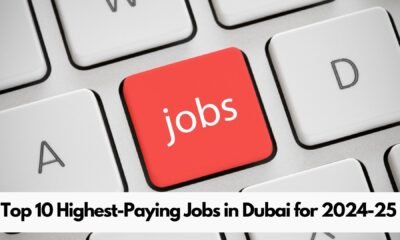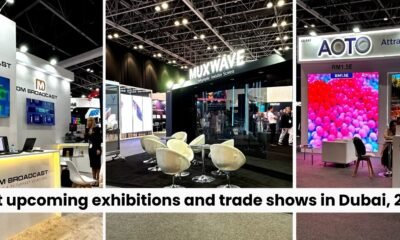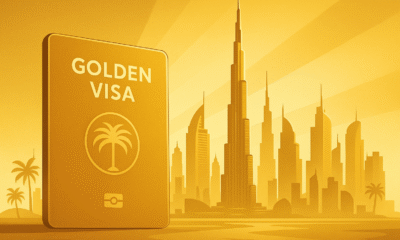Blog
How Can an Exhibition Stand Contractor in Oman Transform My Booth?

Introduction
Exhibitions provide a unique platform for businesses to showcase products, engage with target audiences, and build brand awareness. The physical space where this interaction occurs is often the deciding factor between a memorable experience and a fleeting impression. In regions where trade shows are a regular feature of the commercial calendar, the expertise of professional exhibition stand builders becomes a strategic asset. By translating marketing objectives into functional, attractive structures, they help companies stand out amidst a sea of competitors. Understanding the full scope of services, from concept development to on‑site installation, enables organizers to make informed decisions that enhance visitor engagement and support long‑term brand goals.
Understanding the Role of Exhibition Stand Builders
At the core of any successful exhibition presence is a well‑designed stand that reflects the brand’s identity while meeting practical requirements. Builders collaborate with marketers, designers, and logistics teams to ensure that every element-lighting, graphics, modular components, and interactive zones-works in harmony. Their responsibilities extend beyond mere construction; they must interpret briefings, recommend materials, manage timelines, and adhere to venue regulations. By staying current with emerging technologies such as augmented reality displays and sustainable building practices, they can offer solutions that resonate with modern audiences and align with corporate responsibility goals.
Key Skills and Expertise
Effective exhibition stand builders possess a blend of creative and technical competencies. Critical skills include:
- Conceptual design and spatial planning
- Knowledge of structural engineering principles
- Proficiency with CAD and 3D rendering software
- Experience in sourcing eco‑friendly and durable materials
- Project coordination across multiple stakeholders
These capabilities enable them to transform abstract ideas into tangible environments that attract foot traffic, facilitate product demonstrations, and encourage meaningful conversations.
Choosing the Right Local Partner
When evaluating potential collaborators, businesses often begin by searching for Exhibition stand builders in Oman. Local providers bring valuable insights into regional venue specifications, cultural preferences, and logistical nuances. Their familiarity with local suppliers can reduce lead times and control costs, while their presence on the ground ensures rapid response to unforeseen challenges. Moreover, a provider rooted in the community is more likely to maintain strong relationships with venue managers, which can smooth the approval process for structural modifications or utility connections.
Assessing Portfolio and Experience
A thorough review of past projects reveals the builder’s ability to handle diverse themes and scales. Look for examples that demonstrate:
- Versatility across industries such as technology, healthcare, and consumer goods
- Integration of interactive elements like touchscreens or live demonstrations
- Adaptability to both large‑scale pavilions and compact booth spaces
- Consistency in delivering high‑quality finishes and precise detailing
Case studies that highlight problem‑solving under tight deadlines can also indicate a reliable partner who can navigate the fast‑paced nature of exhibition planning.
Project Management and Coordination
Effective coordination between design, fabrication, and installation phases is essential for staying on schedule. Engaging Exhibition stand contractors in Oman who employ dedicated project managers can streamline communication, track milestones, and mitigate risks. Their ability to synchronize the arrival of structural components with on‑site assembly teams reduces downtime and prevents costly overruns. Additionally, contractors who maintain transparent reporting provide stakeholders with real‑time visibility into progress, fostering confidence throughout the build process.
Design Innovation and Brand Alignment
Brands seeking a distinctive visual impact often partner with a specialist Exhibition stand design company in Oman. These designers translate brand guidelines into immersive environments, using color theory, lighting design, and spatial storytelling to guide visitor flow. By incorporating modular elements, they enable rapid reconfiguration for future shows, extending the lifespan of the investment. Emphasizing user experience-such as creating comfortable meeting zones, clear signage, and engaging demo areas-helps convert casual visitors into qualified leads.
Material Selection and Sustainability
Choosing the right materials influences both aesthetics and environmental impact. An experienced Exhibition booth design company in Oman can recommend options that balance durability with sustainability, such as recyclable aluminum frames, low‑VOC paints, and responsibly sourced wood veneers. Incorporating reusable components not only reduces waste but also lowers long‑term costs for brands that exhibit regularly. Builders who stay informed about green certifications can also help companies meet corporate sustainability targets while maintaining a premium look.
Logistics, Installation, and On‑Site Support
From freight handling to final assembly, the logistics chain must be meticulously planned. Selecting a reliable Exhibition booth builder in Oman ensures that all structural elements arrive intact and are installed according to the design intent. On‑site teams often provide real‑time troubleshooting, adjusting lighting rigs, securing graphics, and verifying compliance with fire safety codes. Their presence during the exhibition also allows for quick repairs or modifications, preserving the stand’s visual integrity throughout the event.
Budget Considerations and Return on Investment
While cost is a critical factor, focusing solely on the lowest price can compromise quality and effectiveness. A holistic budgeting approach evaluates the total cost of ownership, including design fees, material expenses, transportation, labor, and post‑show dismantling. Builders who offer transparent quotations and suggest cost‑saving alternatives-such as modular designs that can be reused-help maximize return on investment. By aligning spend with strategic objectives, businesses can achieve measurable outcomes such as lead generation, brand recall, and market penetration.
Future Trends in Exhibition Stand Construction
The exhibition landscape continues to evolve, driven by advances in technology and shifting audience expectations. Emerging trends include:
- Integration of immersive digital experiences, such as virtual reality zones
- Use of lightweight, high‑strength composites for faster assembly
- Data‑driven design informed by visitor analytics and heat‑mapping
- Hybrid event solutions that blend physical stands with online streaming platforms
Builders who invest in research and development can offer clients cutting‑edge solutions that keep their brand at the forefront of industry innovation.
Conclusion
Choosing a skilled partner for exhibition stand construction is essential for creating memorable brand experiences that drive business growth. By evaluating local expertise, reviewing portfolios, and considering sustainability and technology, organizers can select a builder who delivers both aesthetic appeal and functional reliability. The vibrant ecosystem of providers in the region offers ample options for companies seeking to make a lasting impression at trade shows. For those looking to explore further opportunities, Stands Bay serves as a valuable reference point for quality and innovation in the exhibition industry.
Blog
Looking for a GCS Crypto Currency Licence and Registration in Dubai?

Looking for a GCS Crypto Currency Licence and Registration in Dubai?
Welcome to our guide on Crypto currency license in Dubai. At GCS, we specialize in providing top-quality Crypto currency license services to meet your needs.
Why Choose Our Crypto currency license Services?
Our team of experienced professionals understands the importance of quality Crypto currency license in Dubai. We pride ourselves on delivering exceptional results and customer satisfaction.
Our Approach to Crypto currency license
We take a comprehensive approach to Crypto currency license, ensuring that every aspect of our service meets the highest standards. Our process includes:
- Thorough consultation to understand your specific needs
- Customized solutions tailored to your situation
- Ongoing support throughout the process
- Transparent communication at every step
Important Resources
For more information about Crypto currency license, check out these valuable resources:
- Crypto Currency Licence in Dubai
- Dubai Crypto Currency Licence
- Crypto Currency Registration in Dubai
- Dubai Crypto Currency Registration
- GCS Crypto Currency Licence in Dubai
Get Started Today
Ready to experience the difference our Crypto currency license services can make? Contact GCS today to schedule your consultation. Our team is standing by to answer your questions and help you get started on the path to success.
Don’t wait – reach out to us today and discover why so many people in Dubai trust GCS for their Crypto currency license needs.
Blog
Best Crypto currency license Services in Dubai

Best Crypto currency license Services in Dubai
Welcome to our guide on Crypto currency license in Dubai. At GCS, we specialize in providing top-quality Crypto currency license services to meet your needs.
Why Choose Our Crypto currency license Services?
Our team of experienced professionals understands the importance of quality Crypto currency license in Dubai. We pride ourselves on delivering exceptional results and customer satisfaction.
Our Approach to Crypto currency license
We take a comprehensive approach to Crypto currency license, ensuring that every aspect of our service meets the highest standards. Our process includes:
- Thorough consultation to understand your specific needs
- Customized solutions tailored to your situation
- Ongoing support throughout the process
- Transparent communication at every step
Important Resources
For more information about Crypto currency license, check out these valuable resources:
- Crypto Currency Licence in Dubai
- Dubai Crypto Currency Licence
- Crypto Currency Registration in Dubai
- Dubai Crypto Currency Registration
- GCS Crypto Currency Licence in Dubai
Get Started Today
Ready to experience the difference our Crypto currency license services can make? Contact GCS today to schedule your consultation. Our team is standing by to answer your questions and help you get started on the path to success.
Don’t wait – reach out to us today and discover why so many people in Dubai trust GCS for their Crypto currency license needs.
Blog
Dubai 2025: The Tech Revolution Unveiled – From Smart Cities to AI‑Driven Innovation
Dubai has always been a city that looks toward the future. From its iconic skyline to its ambitious plans for sustainability, the spirit of innovation is woven into every project. In 2025, the city is stepping into a new era where technology is not just a tool but a living system that powers everyday life, reshaping how residents work, travel, shop and connect.
1. The Birth of a Smart City
When most people think of a smart city, images of connected traffic lights, billboards that update in real time, and drones delivering packages come to mind. Dubai’s journey began with the Smart Dubai programme, which set out to create a city where digital services are delivered more efficiently and transparently. The programme’s core goals were:
- Digital identity for citizens and residents.
- Integrated data platform for city services.
- Smart infrastructure that adapts to real‑time needs.
- Encouragement of start‑ups and tech investment.
These pillars laid the groundwork for a city that can react to the needs of its people instantly, making daily life smoother and more rewarding. This foundation also helped launch a wave of projects that pushed Dubai ahead of the global curve.
2. Artificial Intelligence Takes the Driver’s Seat
Artificial Intelligence (AI) has become the engine behind many of Dubai’s newest achievements. From predictive policing that helps keep streets safe to AI‑powered logistics that reduce delivery times, the technology is changing every sector.
Transportation and Mobility
The Dubai Metro’s robots now run maintenance checks without human intervention. Autonomous buses navigate the sidewalks, delivering passengers between business districts with minimal delays.
Healthcare Revolution
AI algorithms predict potential health risks based on lifestyle and genetic data, allowing doctors to intervene early. Virtual consultations powered by AI chatbots provide instant medical advice, freeing up specialists for complex cases.
Public Safety and Law Enforcement
Machine‑learning models detect unusual crowd movements and highlight potential security threats before they grow. Law‑enforcement drones patrol the city, ensuring that emergency response is swift and efficient.
By embedding AI into everyday services, Dubai turns its metropolis into a responsive organism that learns and grows with its people.
3. Blockchain: The Invisible Ledger of Modern Life
While blockchain has made headlines in finance, its real power lies in its transparency and security. Dubai has leveraged the technology to create tamper‑proof systems across government, healthcare, and logistics.
One notable example is the Digital Health Pass—an immutable record that tracks vaccination, medical history, and health alerts. Similarly, property transactions are recorded on a blockchain, cutting down paperwork and fraud while speeding up closing times.
These applications not only add value for the government but also provide a sense of trust for residents and investors alike.
4. The Architecture of Tomorrow: Smart Skyscrapers and Infrastructure
Dubai’s skyline is home to more than just office space; it is a living laboratory for sustainable design. Buildings now incorporate:
- Energy Harvesting Windows: Transparent solar panels that provide electricity to the building’s systems.
- Responsive Facades: Skin that adjusts to sunlight and temperature, keeping interiors comfortable while lowering energy usage.
- Water Recycling Systems: On‑site purification that reduces municipal water demand.
These features not only reduce carbon footprints but also lower operational costs, making high‑rise living accessible to a wider audience.
5. Technology Hubs and the Start‑up Ecosystem
The city’s growth is driven partly by its vibrant ecosystem for technology start‑ups. Numerous incubators provide mentorship, financing, and access to venture capital. Key areas of focus include:
- FinTech solutions simplifying banking for the cloud‑native generation.
- EdTech platforms that bring personalized learning to anyone on the move.
- HealthTech that integrates wearable data with AI diagnostics.
- Supply chain technology creating end‑to‑end traceability.
Dubai’s open data initiatives give start‑ups a wealth of information—making it easier to test and scale products that fit the local market and can also export worldwide.
6. The Human Touch: Building Tech Culture
Innovation is only as good as the people behind it. Dubai invests heavily in human capital: from schools teaching coding from kindergarten to higher‑education programmes that put AI and blockchain at the forefront.
Workshops lead residents to create their own mini‑projects, giving them a sense of ownership over the urban digital narrative. These efforts foster a public appetite for technology, ensuring that the next wave of ideas will come from diverse voices.
7. Looking Ahead: What Lies Beyond 2025?
The ambition never stops. While 2025 has delivered massive strides, the sights are now set on a more interconnected yet sustainable system.
- Zero‑carbon buildings enabled by nanomaterials.
- Hyper‑fast transport links into the desert, turning islands into bustling hubs.
- Advanced AI that helps residents live healthier lifestyles by predicting needs.
- Fully autonomous commercial districts where order and efficiency thrive.
These future projects are based on data collected in real time, meaning the city can adapt quickly to changing aspirations.
Dubai’s transformation demonstrates how creating a digital ecosystem, backed by supportive policy, can accelerate progress for all residents and set a global example for future city planning.
Want to read more about how Dubai is turning skyscrapers into AI hubs? Explore our story on skyscraper AI transformation.
Curious how the city’s smart system uses AI and blockchain to improve everyday life? Dive into the pulse of Dubai’s tech evolution.
Still wondering how visionary dreams turned into a reality of smart cities and AI? Discover the journey of Dubai’s tech pulse.
-

 Business2 years ago
Business2 years agoTop 10 Highest-Paying Jobs in Dubai for 2024-25
-

 Business2 years ago
Business2 years agoTop 10 Business Opportunities in Dubai for 2024-2025
-

 Business2 years ago
Business2 years agoBest upcoming exhibitions and trade shows in Dubai, 2024
-

 Business1 year ago
Business1 year agoHow Much Does It Cost to Open a Company in Dubai in 2024?
-

 Sports2 years ago
Sports2 years agoTop 5 Upcoming International Sporting Events in Dubai (2024-2025)
-

 Blog2 years ago
Blog2 years agoPlaces to Visit in Ras Al Khaimah
-

 Latest4 months ago
Latest4 months agoDubai Golden Visa 2025: Everything You Need to Know About Eligibility, Benefits and Application Process
-

 Business2 years ago
Business2 years agoTop 5 Networking Events for Businesses in Dubai in 2024



